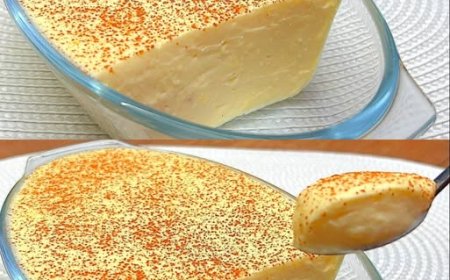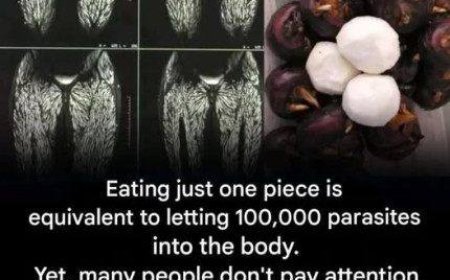The Ancient Secret of Garlic
For most people, garlic is nothing more than a flavorful kitchen staple—an aromatic ingredient that brings depth to soups, stews, and sauces. But throughout history, this humble bulb has carried a far greater reputation. From ancient Egypt and Greece to traditional healers across Asia and the Middle East, garlic has been revered as a medicinal treasure, praised for its ability to fight infections, boost immunity, and restore strength. Today, as modern medicine confronts the rising threat of antibiotic-resistant bacteria, garlic is once again stepping into the spotlight—not as folklore, but as a scientifically supported natural weapon.
1.
Garlic , that humble bulb that seasons our stews and gives life to Mexican cuisine, has been, for millennia, much more than a simple ingredient. From the pyramids of Egypt to the herbalists of traditional medicine, it has been revered as a miraculous healing elixir . But in our era, marked by cutting-edge science and the terrifying shadow of superbugs (those antibiotic- resistant monsters that threaten to erase a hundred years of medical advances), the question becomes urgent and vital: Are those old wives’ tales true, or does this bulb possess real scientific power that could be the key to the next generation of medicines?
The popular belief that “garlic eliminates 14 types of bacteria and 13 types of infections,” while sounding like a charlatan’s numerical oversimplification, is actually an echo of a much deeper and more powerful truth. While serious science doesn’t adhere to exact and rigid numbers, the essence is undeniable: garlic is a broad-spectrum antimicrobial champion , a natural powerhouse whose range of action is so vast that it rivals many synthetic laboratory compounds. The real miracle lies not in the number, but in the chemical genius hidden within each clove.
This deep dive isn’t just a historical overview; it’s a journey into the biochemistry of Allium sativum , where we’ll dismantle the myths to reveal cutting-edge science. We’ll uncover the active compounds that fuel garlic’s war against pathogens, examine its direct impact on drug-resistant strains, and understand why this age-old remedy is resurging as an indispensable tool in the modern fight against infectious diseases. Prepare to have your perception of this kitchen staple forever changed . The answer might be right in your pantry!
The true antimicrobial power of garlic lies not in the intact bulb, but in a dynamic and explosive chemical reaction that is unleashed only when the clove is crushed, mashed, or chopped. It is such an ingenious defense mechanism that only nature could have devised it.
The Enzyme Explosion: The Birth of Allicin
The Dormant State (Alliin): Within a whole clove of garlic, the key compound is alliin , an odorless sulfur molecule, safely stored inside the cells. It’s a loaded weapon, but with the safety on.
The Awakening (Alliinase): When the garlic structure is broken, a specialized enzyme, stored in a separate compartment and called alliinase , is released and rushes to meet the alliin. This is the plant ‘s immediate defense reaction against any invader, from pests to microbes.
The Creation of the Master Weapon (Allicin): This instantaneous reaction produces allicin (diallyl thiosulfinate), the intensely pungent and highly volatile compound responsible for garlic’s characteristic odor and phenomenal biological activity. Allicin is so unstable that it immediately begins to break down into dozens of other beneficial organosulfur compounds, such as ajoenes and diallyl sulfides (DAS, DADS, DATS) , all of which have medicinal properties that complement and prolong the effects of garlic.
How Allicin Wins the War Against Germs
Allicin and its derivatives don’t just inhibit bacterial growth; they launch a large-scale chemical assault with multiple mechanisms of action . This multi-pronged attack strategy is what makes it so incredibly difficult for pathogens to develop resistance, unlike what happens with single-target antibiotics.
Protein Deactivation: Allicin has an astonishing chemical affinity for the sulfhydryl groups (-SH
groups) present in various vital proteins and enzymes within bacteria, fungi, and viruses. Essentially, allicin “jams up” the machinery these pathogens need to breathe, metabolize, feed, and reproduce, leading to their rapid destruction.
Interference with the Genetic Code: Cutting-edge research suggests that these organosulfur compounds also disrupt DNA and RNA synthesis, crippling the bacteria’s ability to replicate and transmit its genetic material. It’s like cutting off the enemy’s lines of communication.
Cell Membrane Damage: The liposoluble (fat-soluble) nature of many sulfur compounds allows them to easily penetrate the bacterial cell membrane , even the thick walls of certain bacteria, causing fatal structural and functional damage.
The Broad Spectrum of Antimicrobial Action of Garlic
Tap the p.hoto to v.iew the full r.ecipe.


























